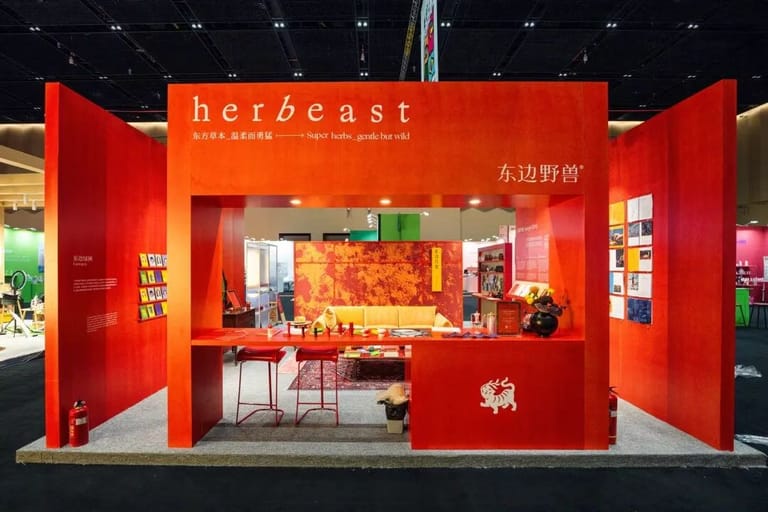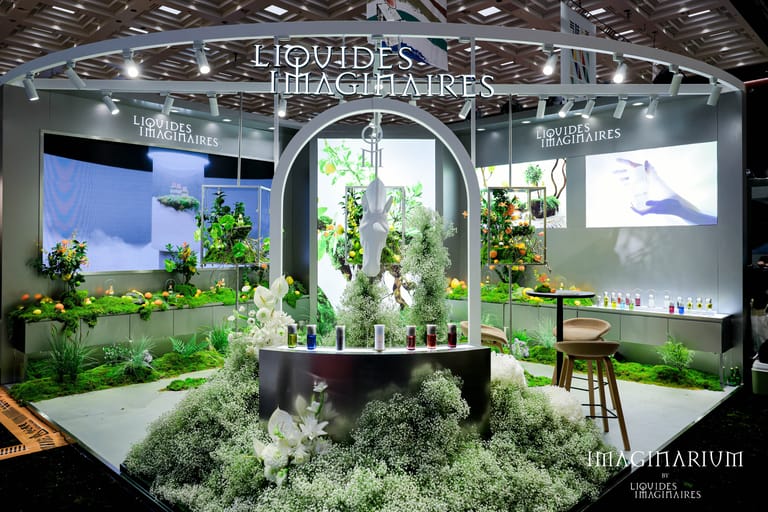How Florasis Is Globalizing C-Beauty with Cultural Precision
By
Huiyan Chen

Published on
April 8, 2025

Chinese beauty disruptor Florasis is the latest Jingzhi Brand to be highlighted as a pioneer shaping the jingzhi(精致) narrative on the global scene. Jingzhi Brand spotlights the most forward-thinking domestic and global brands shaping China’s jingzhi(精致) landscape. Through in-depth storytelling, we explore innovation, cultural strategy, and market ambition, offering a holistic perspective on the evolving intersection of brand identity and China’s dynamic consumer economy.
In the heart of Tokyo’s Ginza Six shopping complex — a high temple of global luxury retail — a storefront wrapped in a deep indigo facade quietly breaks from the familiar chorus of international beauty giants. It belongs to Florasis, a Chinese cosmetics brand making its first official foray abroad with the opening of its Tokyo flagship. And it is doing so on its own terms.
The launch unveiled in January 2025 marks more than a real estate win in one of the world’s most coveted luxury districts. For Florasis, the flagship is a statement of intent: that a brand steeped in Eastern aesthetics can not only compete on the global stage but do so without shedding its cultural roots.
As “going global” becomes a common refrain among Chinese consumer brands, the challenge increasingly lies not in accessing foreign markets, but in building trust, relevance and staying power. For many, that has meant chasing growth through affordability. Florasis is betting on something else: craftsmanship, storytelling, and cultural resonance.
Why Japan — and Why Now?
Inside the Florasis Ginza Six store, architectural cues such as garden stones, bonsai, and lattice windows evoke the tranquil grace of Jiangnan gardens — a visual callback to the brand’s origin near West Lake in Hangzhou. The ambiance is intentional: a bridge between East Asian traditions and the sensibilities of modern beauty consumers.
But the flagship’s location is also strategic. Ginza Six, nestled in one of the most expensive commercial districts in the world, is home to flagship locations for brands like Louis Vuitton, Chanel and Shiseido. To compete here is to enter a different echelon — one where beauty is not just a product but a cultural expression.

While many Chinese beauty brands test the waters in Southeast Asia — where lower costs and shared cultural elements ease market entry — Florasis has taken a riskier route. It is stepping directly into Japan, one of the world’s most sophisticated beauty markets, where domestic brands dominate and consumer standards are exacting.
“Japan offers us three strategic advantages: cultural alignment, retail maturity, and deep consumer trust,” says Gabby YJ Chen, President of Global Expansion at Florasis. “Japanese consumers have a discerning eye for ingredients, design, and product performance — all areas where we’re confident we can deliver.”
This wasn’t a sudden leap. In 2023, Florasis launched a pop-up at @cosme Tokyo store, followed by seasonal shops at Isetan Shinjuku. It then opened a counter at @cosme Osaka store and expanded into Fukuoka and Sapporo. Within a year, Japan accounted for 40 percent of the company’s international sales.

By leveraging shared cultural touchpoints and Japan’s influence in global beauty, Florasis positioned itself not just as a newcomer, but as a serious player with a unique voice.
Betting on Brick-and-Mortar
Florasis’s offline expansion also signals a departure from the prevailing wisdom among digital-native brands, particularly in China, where e-commerce dominates.
The brand launched internationally on Amazon Japan in 2021, then built its own direct-to-consumer site. But unlike many peers, it quickly pivoted to physical retail — not merely to drive sales, but to establish presence and prestige.

“In premium beauty, offline retail isn’t optional — it’s foundational,” Chen notes. “Online platforms allow you to reach consumers efficiently. But physical spaces allow them to feel the brand — to experience its craftsmanship, textures, and values.”
Florasis’s physical retail strategy is tightly focused. From Paris’s La Samaritaine, where it launched in 2023, to Tokyo’s Ginza Six, the brand is intentionally inserting itself into luxury retail ecosystems. These locations don’t just attract high-income shoppers — they shape taste, confer status, and anchor brand credibility.
That investment in offline experience complements a robust digital strategy. The company now sells across a mix of direct channels, independent websites, and social commerce platforms. TikTok Shop and Instagram are key global engines, while local social commerce platforms enable the brand to tailor outreach market by market.
Together, these efforts create a dual-channel framework designed to build long-term awareness, trust, and community — a foundation Florasis hopes will support further expansion into Western and Middle Eastern markets.
Translating the Eastern Narrative
For all the logistical hurdles of international expansion — compliance, distribution, marketing — perhaps the most complex challenge Florasis faces is cultural translation. Not of language, but of meaning.
How do you take a brand built on Eastern beauty traditions and make it speak across borders?
“Bridging cultural differences and earning trust is a long game,” Chen shares. “We believe in global thinking with local execution. That means respecting the values of each market while maintaining a consistent brand identity.”
On the product side, this means adapting formulas to suit local climates and preferences — such as lightweight base products for humid Southeast Asia, or bolder pigmentations tailored to Middle Eastern aesthetics. It also means adjusting packaging and ingredient transparency to meet rising global expectations around clean beauty and wellness.
On the marketing side, Florasis takes a localized approach. It avoids copy-pasting domestic campaigns and instead works with regional influencers, adapting messaging to local sensibilities. The brand remains rooted in traditional Chinese aesthetics, but frames them in ways that resonate with diverse audiences.

This kind of cultural fluency is key to Florasis’s larger ambition: to move beyond the “value” label and redefine what it means to be a Chinese brand abroad.
Beyond Price, Toward Cultural Capital
For decades, “Made in China” in beauty often connoted efficiency, not artistry — supply chain strength, not brand strength. Florasis is part of a new generation of companies rewriting that narrative.
With intricately carved lipsticks, immersive flagship spaces, and a visual identity grounded in Eastern elegance, the brand is betting that Chinese-made no longer has to mean low-cost — it can mean high-concept.
Its strategy offers a road map for Chinese brands looking to compete globally not on price, but on cultural relevance. It’s a recalibration — from volume to value, from output to expression.
Florasis’s arrival in Ginza isn’t just about selling makeup. It’s about entering the cultural conversation — and staying there.












